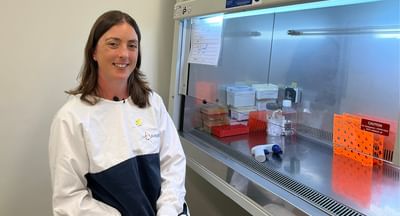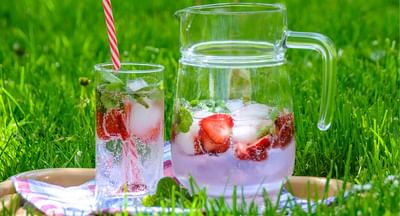We know that the pressure to send kids to school with the perfect lunch box can add additional stress to our already busy lives. Our Prevention Team are here to help with 10 tips to make packing a healthy lunch box, quick and easy.
1. Prepare for the week ahead
Prewash and cut veggies to be ready for assembly. Ask your kids if they need their veggies cut up or will they be happy to munch on a big carrot – you could be surprised by their answer and save yourself the prep time!
2. The freezer is your best friend
Pre-made frozen sandwiches, yoghurts or dips for veggies not only make packing lunch boxes easier, but they can also help keep food cool and safe.
3. Water is all you need
All you need for drinks at school is a water bottle. Save time and money by not packing fruit juice, cordial, flavoured mineral water, soft drink or sports drinks which are high in sugar and low in nutritional value.
4. Use the containers you already have
With cost and environmental factors front of mind, you don’t need to buy a flashy new lunch box. Using the food storage containers you already have is perfectly fine, and in fact is much less frustrating if it ends up in lost property!
5. Consistency is OK
It’s OK to keep lunch boxes consistent, and many kids like the predictability of eating the same thing each day.
6. Single shelf for little helpers
Even the littlest of hands can help pack their own lunch box if it’s easy for them to find what they need in the fridge. Keep all the lunch box options on a single shelf in the fridge. This makes is easy for younger children to independently assemble their lunch box in the morning.
7. All hands in
Tick off two parenting wins by baking healthy muffins or snacks with your kids and freezing them. Kids are always more likely to eat new things if they’ve been involved in making them themselves. Try our healthy recipes for Mini Carrot Cakes or Banana Bread.
8. Grow your own
Even small pots can grow tomatoes, lettuce and other salad ingredients perfect for picking directly into lunch boxes.
9. Love the leftovers
Did you know the average Australian household spends $2,000 to $2,500 a year on food that is thrown away? A simple way to reduce the expense is by freezing the unused fruit for smoothies and freezing any veggies for stocks or soup. There’s also a new, free app called ‘Saveful‘ to help with recipe inspiration for leftover ingredients.
10. Look out for lunch box marketing
Research from Cancer Council NSW shows that nearly 80 per cent of pre-packed lunch box snacks didn’t meet healthy eating criteria despite ‘lunch box friendly’ marketing. There are many unhealthy foods in supermarket aisles designed to be sold as lunch box treats. Save money by sticking to the basics. If you’re stuck for ideas, use this handy Lunch Box Builder.
Learn more with our 4 ways to creating an easier, healthier school lunch box.
A healthy lunch box provides children with the right fuel to support active, growing bodies, and can help them to maintain a healthy lifestyle which, along with other factors, can reduce risk of some types of preventable cancers later in life. Learn more about the link between diet and cancer.






